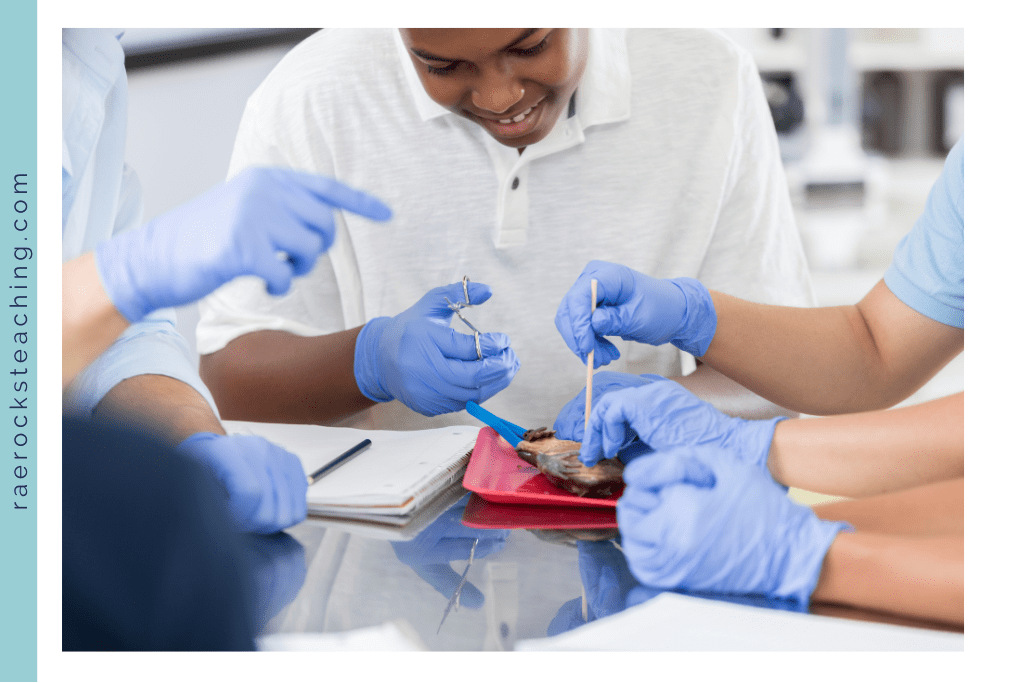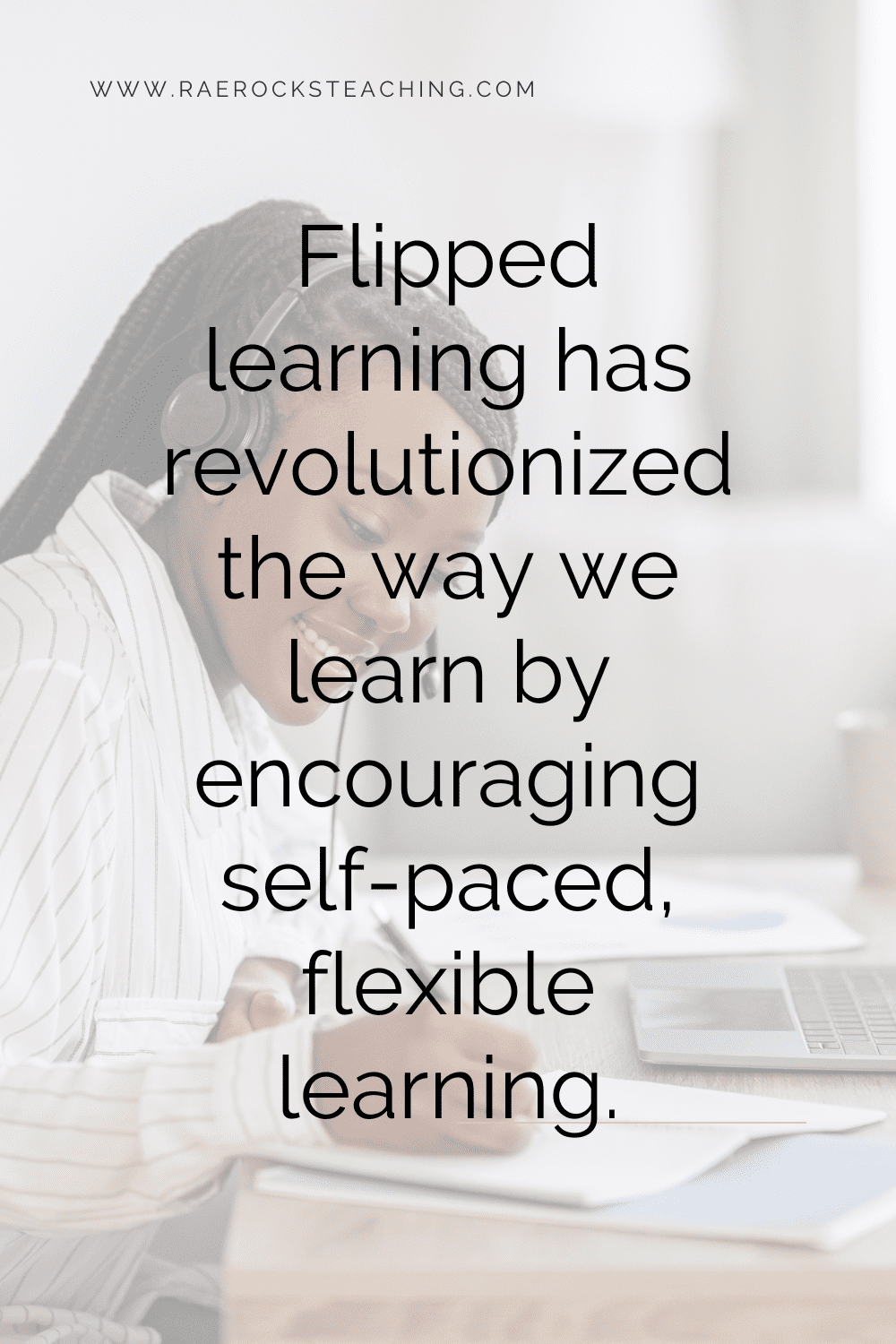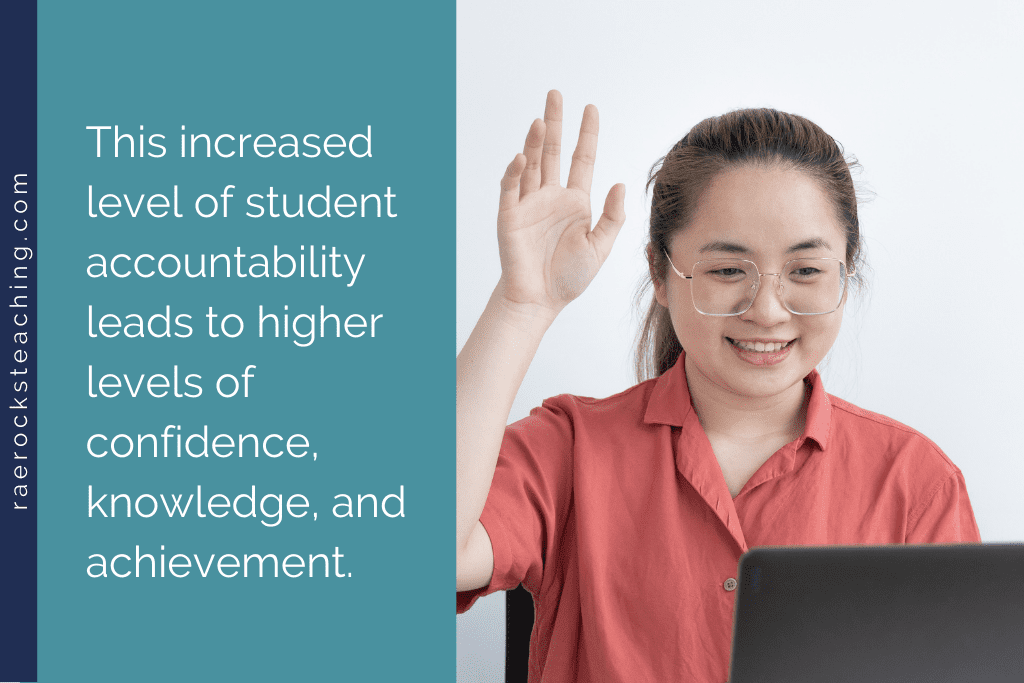Flipping the classroom is a modern twist on traditional teaching, utilizing the principles of breakthrough advertising to create more engaging learning experiences. In a flipped classroom, students watch video lectures or presentations at home, then work through problems and complete assignments in class. This strategy gives teachers the opportunity to address individual issues as they arise, discuss concepts in more depth, and monitor progress in real-time. Additionally, the flipped classroom model allows for more personalized instruction, higher engagement, and increased collaboration as students work together to share ideas, view multiple perspectives, and develop problem-solving skills.
In this blog post, you will learn the 5 reasons I use the flipping the classroom model for my high school anatomy classes.
One | Increased engagement of students
Flipped learning increases student engagement by providing a learning environment that is both engaging and interactive. With flipped learning, instruction is delivered in a digital format, allowing students to access materials at their own pace while giving teachers the ability to monitor student progress and provide immediate feedback. Additionally, flipped learning encourages students to engage in active learning, allowing them to think critically and apply knowledge to real-world problems. By eliminating the traditional lecture-style format, flipped learning puts more power in the hands of students, ultimately boosting student engagement and improving academic performance.

-
Save
Flipping the classroom model also encourages students to become more active participants in their learning. They can watch and review lecture material on their own, allowing them to spend more time discussing important topics during class and collaborating with their peers. This increased engagement will help students to better understand the material and create a deeper understanding.
Two | Encourages self-paced, flexible learning
Flipped learning has revolutionized the way we learn by encouraging self-paced, flexible learning. This method of education allows students to access the course material anytime, anywhere, and take their learning into their own hands. With flipped learning, lectures are recorded and accessed online, allowing students to watch them at their own convenience and learn in the way that works best for them. Instead of spending class time on lectures, teachers can use the time to provide a more interactive learning experience for students. This encourages students to engage more deeply with the material, ask questions, and develop their critical thinking skills. By having more control over when and how they learn, students are empowered to take responsibility for their own learning and develop their self-discipline. Flipped classrooms also provide more opportunities for collaboration between students, helping them build strong relationships and become more successful in their learning.

-
Save
The flexibility of the flipping-the-classroom model helps to ensure that all students have the ability to access the material in their own time and at their own pace and take as much time as they need to understand the material.
Three | Promotes differentiated learning
With students able to work at their own pace and with the ability to pause, rewind, and review videos, the flipping model allows for more differentiated instruction, meeting the needs of diverse learners and accommodating different learning styles.

-
Save
Flipping in the classroom encourages instructors to move away from the traditional lecture model and make use of more interactive activities. This increased interaction helps enhance the learning experience for students. For example, instructors can make use of breakout groups, where students discuss and review the lecture material in small groups, or assign activities that ask students to apply the material they’ve learned to real-world scenarios.
The flipped classroom model also allows instructors to make use of a wider variety of assessment tools. Students can complete online quizzes while viewing the material. Based on those quiz results, students can then be broken into small groups in class that are differentiated based on the learners’ needs. This variety of assessment tools helps ensure that all students are properly assessed and that understanding the material is at the forefront of the classroom design.
Four | Maximizes class time
By eliminating the need for in-class lectures, flipping the classroom allows for more efficient use of classroom time, allowing teachers to spend more time on activities that truly engage and challenge students. Classroom time can now be devoted to hands-on activities, such as dissections and interactive anatomy labs, which can help deepen students’ understanding of the material.

-
Save
Students can then actively engage, ask questions, and work with the material and their peers in a meaningful way, reinforcing their understanding of the concepts. This leads to a more effective and efficient learning experience. Flipped learning has been proven to help students retain information better than the traditional approach, making it an invaluable tool in maximizing class time and hands-on learning.
Five | Increases student accountability
Flipped learning increases student accountability by providing students with the resources and skills needed to succeed. Through engaging activities, comprehensive instructional videos, and the guidance of teachers, students become more responsible for their own learning. As students become more invested in their own success, they become more accountable for their learning outcomes. By taking ownership of their learning, students become more engaged in the content and more likely to take responsibility for their own learning. This increased level of student accountability leads to higher levels of confidence, knowledge, and achievement.
By allowing students to access the lecture material online and complete activities before or after class, instructors can hold them accountable for their learning. This increased accountability encourages students to take ownership of their learning and be active participants in the classroom.

-
Save
By leveraging the power of modern media, the flipped classroom invites students to actively engage in their learning of anatomy concepts while providing opportunities for teachers to provide a more dynamic and effective learning environment.
Don’t forget to grab your FREE COPY of The Ultimate Guide to Engage Students To Learn Anatomy | 7 Secrets To Implement Today

-
Save
I love sharing helpful content with y’all and would love to connect on IG or Facebook. I’m on TikTok too! Follow me and send me a DM with what you need more of because I’m here to help! If you are looking for even more inspiration, find me on Pinterest!
Wanna read more?
How I Make Flipping in the Classroom Work for My Student Population
The Flipped Classroom and Technology You Need to Make it Successful for Anatomy
Share via:








